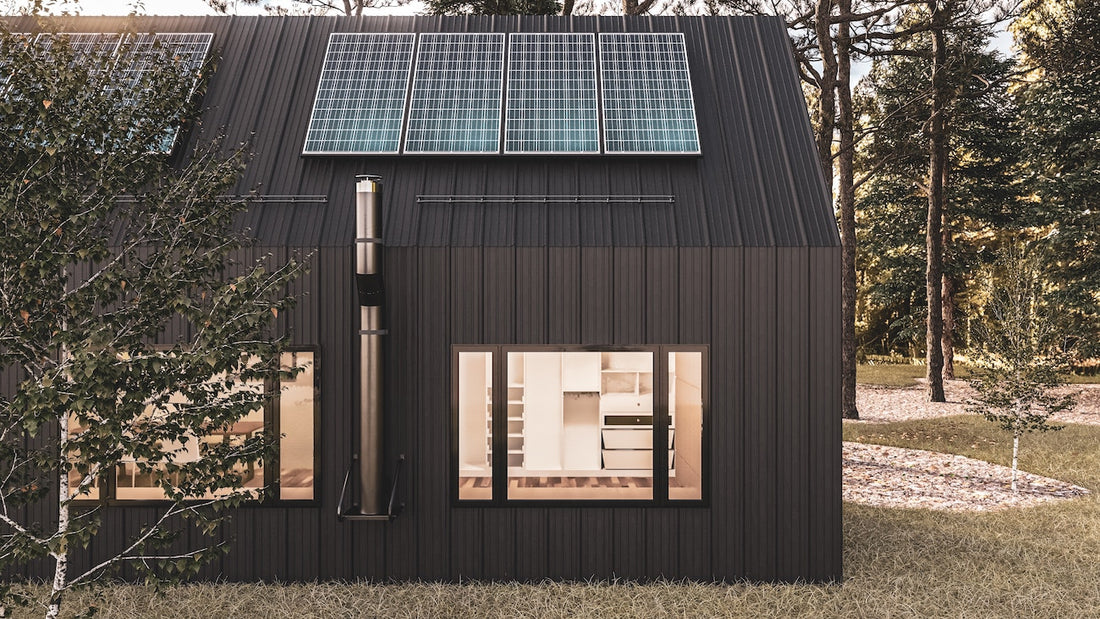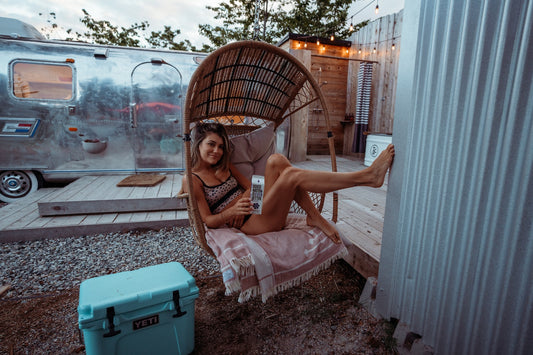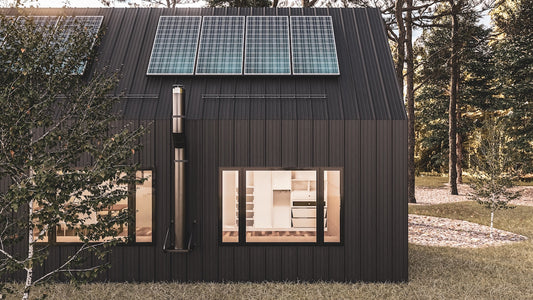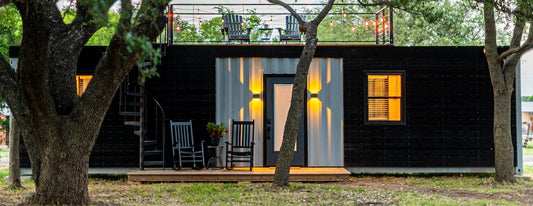So what is Passive Solar Design?
Passive solar design refers to the use of the sun’s energy to heat and cool living spaces in a building without the use of mechanical systems. It is called "passive" because it does not involve the use of mechanical devices or active systems (like electric pumps) to move heat. Instead, it capitalizes on natural energy flows through smart design and material choices. Here's a closer look at the principles and strategies involved in passive solar design.
Choosing Vacant Land
Choosing the perfect land is the first vital step in the journey towards owning a building that utilizes passive solar design. The right plot will have clear southern exposure, minimal shading, protection from prevailing winds, and favorable soil and ground conditions. Before making a purchase, it’s also important to consider the legal and logistical aspects of the land. With the right plot of land, your passive solar designed building can be a model of sustainability and efficiency for years to come.
Southern Exposure
In the Northern Hemisphere, the key is to have unobstructed southern exposure. This means that the major living spaces and windows of your building are oriented towards the south. This maximizes the amount of sunlight that enters the building during the winter months, providing free heat and light.
Gentle Sloping
A gently south-sloping site can further enhance the building’s solar exposure. This is because the building will naturally be positioned to receive ample sunlight throughout the day, and throughout the seasons, especially in winter.
Minimal Shading
Choose a location with minimal obstructions like tall buildings or dense tree cover to the south of your site. While deciduous trees can be beneficial (they provide shade in summer and let light through in winter), avoid land with excessive shading, as this will reduce the effectiveness of your passive solar design.
Wind Protection
Wind can significantly impact the energy efficiency of a building. Select land that has natural windbreaks, such as hills or forests to the north and west, which can help to reduce the cooling effects of winter winds.
Soil Type and Ground Conditions
The soil type and ground conditions should enable good insulation and thermal mass properties. For instance, soil with good drainage is generally preferable as it avoids issues related to moisture and cold.
Access to Materials
A site that is relatively close to sources of building materials, especially those that are eco-friendly and suited to passive solar design, is another key factor. This could reduce construction costs and the environmental impact of transporting materials.
Legal and Zoning Considerations
Before purchasing land, ensure that there are no legal or zoning issues that would prevent you from building in accordance with passive solar design principles. Check with local municipalities about specific land use regulations.
Key Principles of Passive Solar Design
When it comes to creating an energy-efficient building, passive solar design stands out as a smart and sustainable choice. At the core of this design is a simple principle: use the sun's energy to heat and light your space naturally. But to get the most out of a passive solar design, selecting the right piece of land is crucial. Here are the features that your land should ideally possess to support and maximize this eco-friendly design:
Orientation
The building is oriented so that its major axis is aligned east-west, with the majority of windows facing south (in the Northern Hemisphere) or north (in the Southern Hemisphere). This orientation maximizes the building’s exposure to sunlight, which can be used to naturally heat the home in winter and can be shaded to cool the home in summer.
Thermal Mass
Materials with high thermal mass, such as concrete, bricks, or stone, are used in the building's floors or walls near the windows. These materials absorb heat during the day and slowly release it at night, helping to stabilize indoor temperatures.
Insulation
Proper insulation is crucial. Walls, floors, and roofs are well-insulated to retain heat in the winter and repel heat in the summer. Insulated windows and doors are also important components.
Window Placement and Design
Windows are strategically placed to allow sunlight to enter and heat the living spaces during winter, while overhangs, pergolas, or deciduous trees can be used to shade these windows in the summer, when the sun is higher in the sky.
Double glazing, low-emissivity (Low-E) coatings, and insulated frames can prevent heat loss through windows, making them much more energy-efficient.
Natural Ventilation
Passive solar design also considers how air moves through a building. In summer, natural ventilation strategies, like placing windows to encourage cross-ventilation, can help to cool a building. In winter, ventilation is minimized to retain heat.
Daylighting
This involves placing windows and other openings so that during the day natural light provides effective internal lighting. This reduces the need for artificial lighting and its associated energy costs.
Benefits of Passive Solar Design
Energy Savings
Because passive solar design relies on natural resources, like sunlight and thermal mass, to heat and cool spaces, it can significantly reduce or even eliminate the need for mechanical heating and cooling systems, thereby reducing energy bills.
Comfort
Passive solar homes often feel more comfortable because they are designed to maintain a more consistent indoor temperature, rather than fluctuating between the extremes of hot and cold.
Sustainability
Passive solar design is a green, sustainable approach to heating and cooling a home. It reduces reliance on fossil fuels and does not contribute to greenhouse gas emissions.
Low Maintenance
Because passive solar design does not involve complex mechanical systems, there are fewer components that can break down, leading to lower maintenance costs over time.
Conclusion
In conclusion, passive solar design is an intelligent way to harness solar energy for heating and cooling purposes, using the building’s architecture in harmony with its environment. It’s not only a cost-effective approach but also a sustainable and environmentally friendly one.





